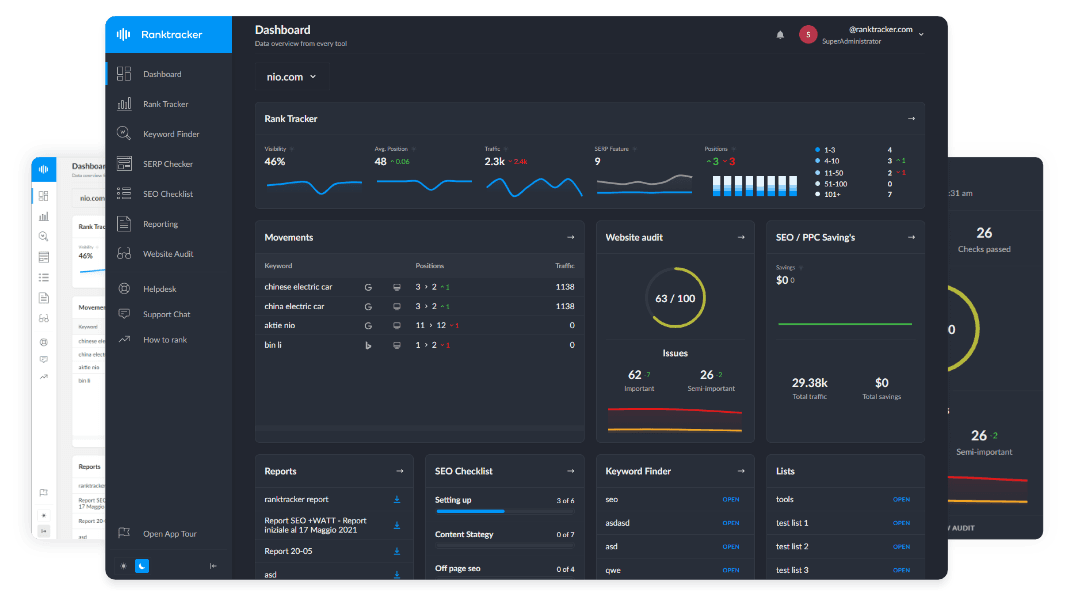Intro
Building a beautiful and functional app with FlutterFlow is fast, easy, and ideal for launching MVPs or full-scale products quickly. However, one often-overlooked factor in no-code development is Search Engine Optimization (SEO).
If your app or website isn’t properly optimized, it might stay invisible to Google—no matter how good it looks or how well it performs for users.
This guide walks you through SEO basics tailored to FlutterFlow, with practical tips, examples, and suggestions—even if you have zero background in SEO.
What Makes SEO Tricky with Flutter and FlutterFlow?
Apps built with Flutter (and by extension, FlutterFlow) are rendered on the client side using JavaScript. This is great for speed and user experience, but not ideal for SEO because:
-
Search engines sometimes struggle to read JavaScript-rendered content.
-
Metadata and URLs may not be automatically optimized.
-
Site structure can be harder for bots to crawl.
1. Use Clean, Descriptive URLs
FlutterFlow lets you define custom route names, which form your app’s URLs.
What to do:
-
Avoid using generic URLs, such as**
/page_1or/page_2. -
Use SEO-friendly names like
/about,/features, or/task-manager-for-teams.
Why it matters:
Search engines and users both prefer meaningful URLs—it helps them understand your content immediately.
2. Add Metadata: Title and Description Tags
Search engines use metadata to understand your page. Since FlutterFlow doesn’t auto-generate these, you need to manually insert them using a custom header code.
What to do:
Go to **Custom Code → Header Code and add this:
<title>Best Time Tracker App for Freelancers</title>
<meta name="description" content="Track your freelance hours with our easy-to-use app built using FlutterFlow. Free trial included.">
Repeat this for every main page using conditional logic if needed.
Why it matters:
Metadata controls how your site appears in search results. Well-written tags improve click-through rates (CTR).
The All-in-One Platform for Effective SEO
Behind every successful business is a strong SEO campaign. But with countless optimization tools and techniques out there to choose from, it can be hard to know where to start. Well, fear no more, cause I've got just the thing to help. Presenting the Ranktracker all-in-one platform for effective SEO
We have finally opened registration to Ranktracker absolutely free!
Create a free accountOr Sign in using your credentials
** 3. Ensure Mobile Responsiveness**
FlutterFlow apps are mobile-first, but you still need to test responsiveness across devices.
What to do:
-
Use FlutterFlow’s Device Preview Tool to test on mobile, tablet, and desktop.
-
Ensure fonts, padding, and buttons resize correctly.
Why it matters:
Google uses mobile-first indexing, meaning your app is evaluated based on the mobile experience.
4. Optimize Page Speed (Core Web Vitals)
Page speed is a ranking factor. While FlutterFlow apps are usually fast, performance can be impacted by large images or complex animations.
What to do:
-
Compress all images before uploading.
-
Avoid using too many animations and custom fonts.
-
Run your published app through Google PageSpeed Insights and apply recommendations.
Why it matters:
Slow apps result in higher bounce rates, which signals a poor user experience for Google.
5. Create and Submit a Sitemap
FlutterFlow doesn’t generate a sitemap by default, but you can create one manually to help search engines crawl your site.
What to do:
-
Create a basic XML file with all your app routes.
-
Host it on your site’s domain (e.g., **
yourdomain.com/sitemap.xml). -
Submit the sitemap via Google Search Console.
<urlset xmlns="http://www.sitemaps.org/schemas/sitemap/0.9">
<url><loc>https://yourdomain.com/</loc></url>
<url><loc>https://yourdomain.com/features</loc></url>
</urlset>
Why it matters:
Sitemaps give Google a map of your content structure, improving indexing.
6. Use Real Text Content and Alt Text for Images
Many no-code builders fall into the trap of using images with embedded text—but search engines can’t read those.
** What to do:**
-
Use text widgets instead of embedding content in image files.
-
Use alt attributes on images via custom HTML when needed:
<img src="feature1.png" alt="Team collaboration dashboard">
Why it matters:
Text is crawlable, indexable, and keyword-relevant—images alone don’t help SEO.
7. Connect Google Tools: Analytics and Search Console
You need data to improve your SEO. Start by integrating:
-
Google Analytics to track users and engagement.
-
Google Search Console to monitor indexing, clicks, and performance.
What to do:
- Paste the tracking script in **
Custom Code → Header Code.
Work with a Professional FlutterFlow Development Agency
If you want to go beyond basic optimization and build an app that’s SEO-ready from the ground up, consider working with a Flutterflow development agency.
They can help you with:
-
Advanced metadata handling
-
Structured data/schema integration
-
Server-side rendering alternatives
-
Custom SEO automation pipelines
Top 3 Flutterflow agencies:
1.InceptMVP:
InceptMVP is a certified FlutterFlow development agency that specializes in turning app ideas into fully functional web and mobile applications using FlutterFlow’s no-code platform.
The All-in-One Platform for Effective SEO
Behind every successful business is a strong SEO campaign. But with countless optimization tools and techniques out there to choose from, it can be hard to know where to start. Well, fear no more, cause I've got just the thing to help. Presenting the Ranktracker all-in-one platform for effective SEO
We have finally opened registration to Ranktracker absolutely free!
Create a free accountOr Sign in using your credentials
With a team of over 50 experts and 100+ successful projects, they offer end-to-end services including Figma prototyping, FlutterFlow development, custom widget coding, quality assurance, and app deployment. InceptMVP caters to industries like healthcare, education, fintech, and real estate, delivering responsive, scalable, and cost-effective solutions.
Backed by 5-star ratings on Google, Clutch, Upwork, and GoodFirms, the agency is known for rapid MVP development, real-time collaboration, third-party integrations, and a strong client-first approach.
2. FlutterFlowDevs:
FlutterFlowDevs is a premier FlutterFlow development agency renowned for delivering high-quality, cross-platform applications efficiently and cost-effectively.
The All-in-One Platform for Effective SEO
Behind every successful business is a strong SEO campaign. But with countless optimization tools and techniques out there to choose from, it can be hard to know where to start. Well, fear no more, cause I've got just the thing to help. Presenting the Ranktracker all-in-one platform for effective SEO
We have finally opened registration to Ranktracker absolutely free!
Create a free accountOr Sign in using your credentials
As a certified FlutterFlow expert and official partner of platforms like Buildship and Rowy.io, they offer comprehensive services including app and web development, MVP creation, AI agent integration, and enterprise training. Their client portfolio features esteemed organizations such as the World Health Organization, PwC, and Specno.
With a track record of winning multiple FlutterFlow Hackathons, FlutterFlowDevs demonstrates a commitment to innovation and excellence in the no-code development space.
3. Sommo:
Sommo is a leading FlutterFlow development agency specializing in creating high-quality, cross-platform applications for startups and enterprises. With a focus on rapid development, Sommo leverages FlutterFlow's drag-and-drop interface to build custom user interfaces, ensuring seamless integration with databases, APIs, and third-party tools.
Their development process encompasses four key stages: Discovery, UI/UX Design, Development, and Maintenance. During the Discovery phase, the team collaborates with clients to define project scope and objectives, delivering wireframes and a comprehensive roadmap within 2-4 weeks.
The UI/UX Design stage focuses on creating interactive designs and user flows, typically completed in 3-6 weeks. Development involves building the application using FlutterFlow, integrating necessary services, and thorough testing over 4+ weeks. Post-launch, Sommo provides ongoing maintenance to ensure the app remains functional and up-to-date.
Final Thoughts
SEO might seem like a technical afterthought in a no-code environment, but it’s essential if you want your app to grow organically. With a few extra steps—like cleaning up URLs, injecting metadata, optimizing images, and monitoring performance—you can make your FlutterFlow app as SEO-friendly as any traditionally coded site.

